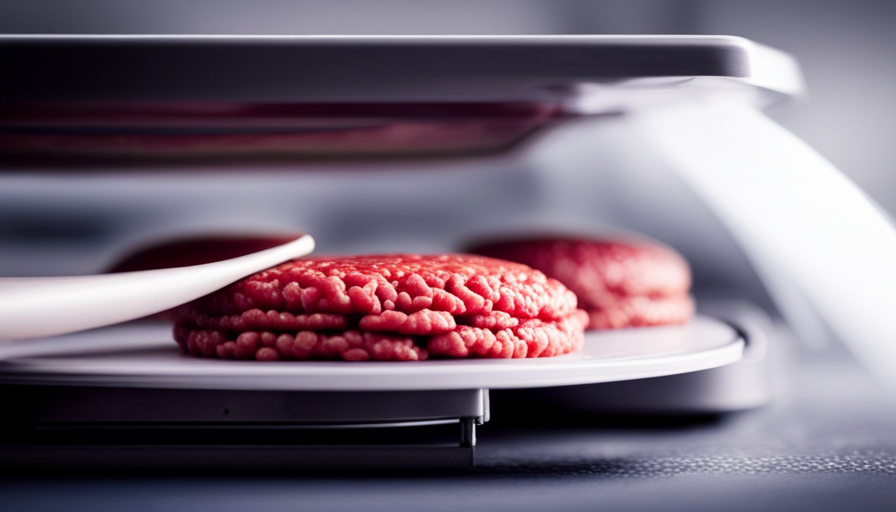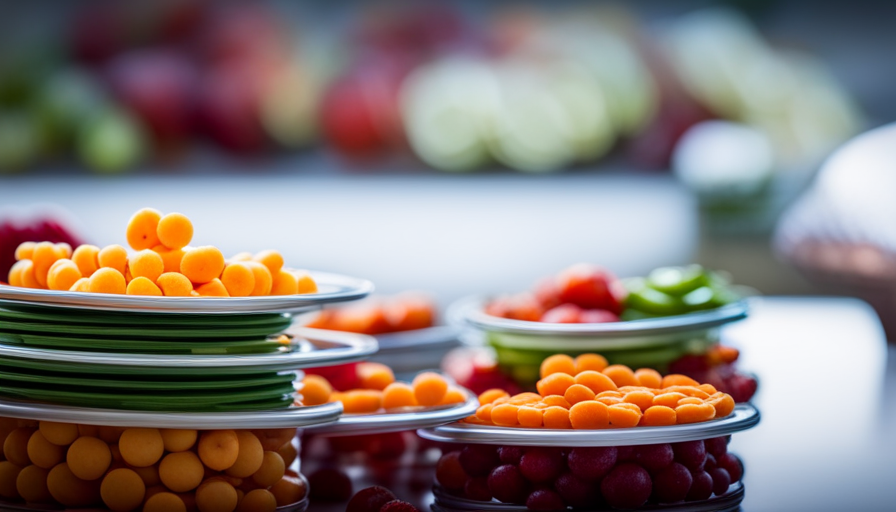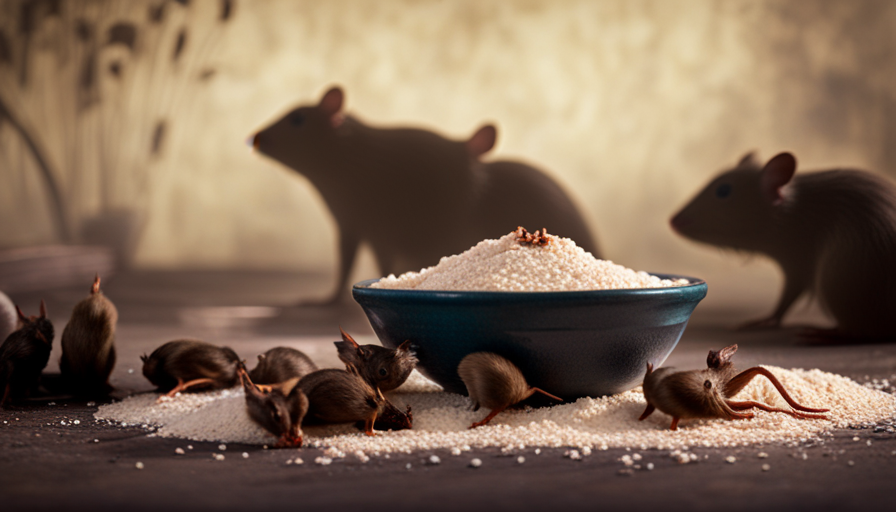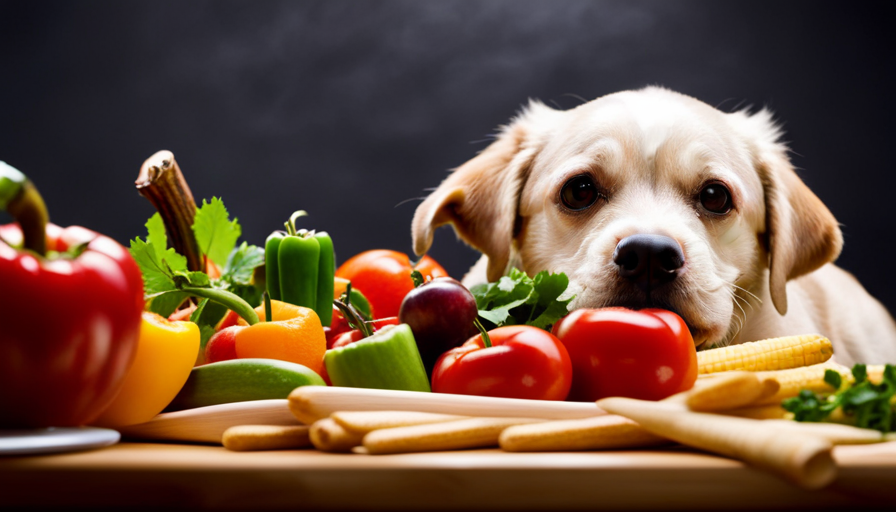When it comes to maintaining the freshness and flavor of raw hamburger patties, my preferred method is using a food saver. This convenient tool allows me to vacuum seal my patties, keeping them fresh for extended periods of time. So, what is the most effective way to do this? Allow me to share some tips and tricks to help you achieve the best results.
First things first, selecting the right packaging material is crucial. You want something sturdy and airtight, like high-quality vacuum-seal bags. Once you’ve got that covered, it’s time to prepare your patties. Make sure they’re properly shaped and seasoned to your liking.
Next, arrange the patties in a single layer inside the bag, leaving some space between each one. This allows for even freezing and thawing. Now comes the fun part – removing excess air from the bag. Using the food saver, suck out all the air until the bag tightly hugs the patties.
Sealing the bag properly is essential to maintain the vacuum seal. Double-check that the seal is secure and airtight. Now, it’s time to store those vacuum-sealed patties. Place them in the freezer, making sure they’re in a flat, stable position.
When you’re ready to enjoy your delicious burgers, simply thaw and cook the vacuum-sealed patties as you normally would. But remember, safety first! Follow the recommended thawing and cooking guidelines to ensure your patties are safe to eat.
Lastly, let’s talk shelf life. When vacuum-sealed and stored properly, raw hamburger patties can last up to three to four months in the freezer. However, always trust your senses – if the patties have an off smell or appear discolored, it’s best to discard them.
Now that you’re armed with these tips and tricks, go ahead and confidently vacuum seal your raw hamburger patties with your trusty food saver. Your taste buds will thank you!
Key Takeaways
- Select high-quality vacuum-seal bags made from multilayer materials and suitable for freezing.
- Shape and season the hamburger patties before vacuum sealing, ensuring even distribution of seasoning and a slight indentation in the center.
- Remove excess air from the bag using a food saver to create a tight seal and maintain freshness.
- Properly label and date the vacuum-sealed patties to track freshness, prioritize use, and reduce the risk of spoilage.
Selecting the Right Packaging Material
Now, let’s talk about finding the perfect packaging material to keep your raw hamburger patties fresh and delicious. When it comes to vacuum sealing techniques, selecting the right packaging material is crucial. The benefits of vacuum sealing include extending the shelf life of your patties, preventing freezer burn, and preserving the flavor and juiciness.
For vacuum sealing raw hamburger patties, it’s recommended to use high-quality vacuum sealing bags or rolls specifically designed for food preservation. These bags are made from multilayer materials that provide a barrier against moisture and oxygen, which are the primary culprits behind food spoilage. Look for bags that are BPA-free and have a thickness of at least 3 mil to ensure maximum protection and durability.
When selecting the packaging material, make sure it’s compatible with your food saver machine. Some machines require specific types of bags or rolls, so it’s essential to check the manufacturer’s recommendations. Additionally, opt for bags that are suitable for freezing, as raw hamburger patties will most likely be stored in the freezer.
Now that you’ve selected the perfect packaging material, let’s move on to preparing the hamburger patties for vacuum sealing.
Preparing the Hamburger Patties
To prepare your hamburger patties for vacuum sealing, you’ll want to make sure they are shaped evenly and have a slight indentation in the center to prevent them from puffing up during cooking. This will ensure that the patties freeze well and maintain their shape.
When it comes to freezing techniques, it’s important to handle the raw meat with care to maintain its quality. After shaping the patties, you can choose to season them before vacuum sealing. This step allows the flavors to penetrate the meat, enhancing the taste when you cook them later. Some popular seasoning options include salt, pepper, garlic powder, or even a dash of Worcestershire sauce.
To add depth to this discussion, here’s a table showcasing different seasoning options you can use for your hamburger patties:
| Seasoning Option | Description |
|---|---|
| Salt and Pepper | Classic and simple |
| Cajun Seasoning | Adds a spicy kick |
| Italian Seasoning | Infuses a herbaceous flavor |
| Barbecue Rub | Gives a smoky taste |
After seasoning, arrange the patties in a single layer in your food saver bag or roll. This will ensure that they freeze evenly and maintain their shape.
Arrange the Patties in a Single Layer
Once you’ve shaped your evenly sized and seasoned hamburger patties, make sure to arrange them in a single layer. This step is crucial for maximizing freshness and ensuring the best results when vacuum sealing with your food saver. Here are some packing techniques to help you achieve optimal results:
-
Use a flat surface: Place the hamburger patties on a flat surface, like a baking sheet or cutting board, to ensure they are arranged in a single layer. This will prevent any patties from sticking together during the freezing process.
-
Leave space between patties: Make sure there is enough space between each patty to allow for proper airflow. This will help the patties freeze evenly and prevent ice crystals from forming, which can affect the texture and taste.
-
Avoid overlapping patties: Overlapping patties can cause uneven freezing and potential damage. Arrange them so they are not overlapping or touching each other.
-
Place a sheet of parchment paper: To further prevent sticking, you can place a sheet of parchment paper between each layer of hamburger patties. This will make it easy to separate them when it’s time to cook.
By following these packing techniques, you’ll be able to freeze your hamburger patties evenly and maintain their shape. Next, we’ll discuss how to remove excess air from the bag to preserve freshness and prevent freezer burn.
Removing Excess Air from the Bag
Ensure you remove excess air from the bag to preserve the freshness and prevent freezer burn, so your hamburger patties stay delicious and ready to cook whenever you desire.
When using a food saver to vacuum seal raw hamburger patties, it’s crucial to eliminate any excess air inside the bag. This step not only helps in maintaining the quality and taste of your patties but also extends their shelf life. By removing the air, you prevent the growth of bacteria and the oxidation process that can lead to spoilage.
To remove excess air from the bag, first, ensure that the vacuum sealer is in good working condition. Regular maintenance of your vacuum sealer will guarantee optimal performance.
Once you have arranged the patties in a single layer, carefully place the open end of the bag into the vacuum sealer. Activate the vacuum seal function, and the machine will start removing the air from the bag. As the air is removed, you’ll notice the bag tightly wrapping around the patties, creating a seal that locks in the freshness.
Properly sealing the bag is essential to maintain the vacuum seal and prevent any air from re-entering. This will further enhance the benefits of vacuum sealing, such as preventing freezer burn and preserving the flavor and texture of your hamburger patties.
With the excess air removed and the bag sealed securely, your patties are now ready to be stored in the freezer or cooked right away.
Sealing the Bag Properly
Properly sealing the bag is key to preserving the freshness and flavor of your mouthwatering hamburger patties, ensuring they stay delicious until you’re ready to cook them.
When using a food saver to vacuum seal raw hamburger patties, it’s essential to follow the correct procedures to achieve an airtight seal. If you don’t have a vacuum sealer, there are alternative methods you can use. One option is to use a zip-top bag and remove as much air as possible by hand before sealing it tightly. Another option is to use a straw to suck out the excess air before sealing the bag.
If you’re experiencing sealing issues with your vacuum sealer, there are a few troubleshooting steps you can take. First, make sure that the bag is properly positioned in the sealer and that the sealing strip is clean and free from any debris. If the bag isn’t sealing properly, you may need to adjust the sealing time or temperature settings on your machine. It’s also important to check for any wrinkles or folds in the bag that may be preventing a proper seal.
In the next section, we’ll discuss the importance of labeling and dating the vacuum-sealed patties to keep track of their freshness and ensure you use them in a timely manner.
Labeling and Dating the Vacuum-Sealed Patties
Labeling and dating the vacuum-sealed patties is a simple yet crucial step in keeping track of their freshness and ensuring they’re used within the optimal time frame. By labeling the packages, you can easily identify the contents without having to open them, saving time and reducing the risk of spoilage.
Additionally, dating the patties allows you to prioritize their use based on the date of sealing. This ensures that older patties are used first, minimizing waste and maintaining quality.
When labeling the vacuum-sealed patties, it’s important to include essential information such as the date of sealing and the type of meat. This helps you keep track of when the patties were prepared and identify any potential issues in case of a recall or foodborne illness. You can use waterproof labels or permanent markers to ensure the information remains intact and legible throughout the storage period.
Proper storage recommendations for vacuum-sealed patties include keeping them in a freezer set at or below 0°F (-18°C). This temperature ensures that the patties remain frozen and maintain their quality and taste for an extended period. It’s important to stack the patties flat and avoid overpacking to allow for efficient air circulation and even freezing.
In the subsequent section about storing the vacuum-sealed patties, we’ll discuss the importance of proper packaging and the ideal storage duration to maintain the best quality.
Storing the Vacuum-Sealed Patties
To store your vacuum-sealed patties, remember to follow these important guidelines for optimal freshness and taste.
When storing frozen patties, it’s crucial to keep them in a well-organized freezer. This will not only ensure easy access but also prevent any potential cross-contamination with other food items.
Start by designating a specific area in your freezer for the patties, preferably on a lower shelf, away from raw meats and other perishable items. This will help maintain a consistent temperature and prevent any accidental thawing.
To further protect the patties, place them in a sturdy plastic container or ziplock bag before placing them in the designated area. This will provide an extra layer of protection against freezer burn and help maintain their shape. Additionally, make sure to label and date each package to keep track of their freshness.
When organizing the freezer, it’s best to stack the patties in a way that allows for easy retrieval. Place the oldest packages at the front, so they’re used first, while keeping the newer ones towards the back. This rotation system will ensure that you consume the patties in the order they were stored, minimizing any potential waste.
By properly storing your vacuum-sealed patties in an organized freezer, you can maintain their quality and taste for an extended period.
Now, let’s move on to the next step: thawing and cooking the vacuum-sealed patties.
Thawing and Cooking the Vacuum-Sealed Patties
After storing the vacuum-sealed patties, it’s important to know the proper way to thaw and cook them. When it’s time to enjoy those juicy hamburgers, I recommend thawing the patties in the refrigerator overnight. This slow thawing method ensures even defrosting and minimizes the risk of bacterial growth.
Once thawed, it’s time to fire up the grill or heat up the skillet. Before cooking, you can season the patties according to your taste preferences. From classic salt and pepper to more adventurous spice blends, the possibilities are endless. Just make sure to evenly distribute the seasoning on both sides of the patty for maximum flavor.
When it comes to cooking temperature, the USDA recommends cooking ground beef to an internal temperature of 160°F (71°C) to ensure it’s safe to eat. This temperature kills any potential bacteria present in the meat.
Now that we’ve covered thawing and cooking, let’s move on to the next section about shelf life and safety guidelines. It’s important to understand how long vacuum-sealed hamburger patties can be stored and the proper safety measures to follow.
Shelf Life and Safety Guidelines
To ensure the safety of your vacuum-sealed hamburger patties and prolong their shelf life, it’s crucial to follow these guidelines and take the necessary precautions. Factors affecting the shelf life of vacuum-sealed hamburger patties include temperature, moisture, and oxygen exposure. Proper handling and storage are of utmost importance for food safety in vacuum-sealed patties.
Temperature plays a key role in the shelf life of vacuum-sealed hamburger patties. It is recommended to store them at or below 40°F (4°C) to inhibit bacterial growth. Moisture can lead to spoilage, so it’s essential to remove excess moisture from the patties before sealing. Additionally, exposure to oxygen can cause oxidation and deterioration of the meat, resulting in a shorter shelf life. By vacuum sealing, you can effectively remove oxygen from the packaging, extending the quality and freshness of the patties.
To better understand the impact of these factors, refer to the table below:
| Factors | Shelf Life Impact |
|---|---|
| Temperature | Prolongs shelf life when kept at or below 40°F (4°C) |
| Moisture | Excess moisture leads to spoilage |
| Oxygen exposure | Oxidizes meat, causing deterioration |
By following these guidelines and considering these factors, you can maximize the shelf life and ensure the safety of your vacuum-sealed hamburger patties. Now, let’s explore additional tips and tricks for vacuum sealing raw hamburger patties.
Additional Tips and Tricks for Vacuum Sealing Raw Hamburger Patties
Now that we understand the shelf life and safety guidelines for vacuum sealing raw hamburger patties, let’s explore some additional tips and tricks to ensure the best results.
When it comes to vacuum sealing raw hamburger patties, there are a few things to keep in mind. First, it’s essential to handle the patties with clean hands and ensure they’re properly shaped and sized for your needs. Here are some additional tips to consider:
-
Freeze patties before vacuum sealing: Freeze the patties for about 30 minutes prior to vacuum sealing. This will help maintain their shape and prevent them from getting squished during the sealing process.
-
Use parchment paper: Place a small piece of parchment paper between each patty before vacuum sealing. This can prevent them from sticking together, making it easier to separate and thaw only the desired amount.
-
Vacuum seal fruits: Utilize your food saver for vacuum sealing fruits as well. This’ll help preserve their freshness and extend their shelf life, making them perfect for smoothies or baking.
-
Vacuum seal leftovers: Don’t limit your food saver to just raw patties. Vacuum sealing leftovers like cooked hamburger patties can help maintain their flavor and juiciness, allowing you to enjoy the same deliciousness even after some time.
By following these additional tips and tricks, you can maximize the benefits of using your food saver and ensure that your vacuum-sealed raw hamburger patties stay fresh and delicious for an extended period.
Frequently Asked Questions
Can I vacuum seal my hamburger patties with regular plastic wrap?
No, regular plastic wrap isn’t suitable for vacuum sealing hamburger patties. Vacuum sealing offers several benefits such as preventing freezer burn, extending the shelf life, and maintaining the freshness of food. To properly vacuum seal raw hamburger patties, it’s recommended to use a food saver or vacuum sealer machine. Alternatively, you can store the patties in airtight containers or freezer bags to maintain their quality and prevent spoilage.
How long can I store vacuum-sealed hamburger patties in the freezer?
When it comes to storing vacuum-sealed hamburger patties in the freezer, you’ll be pleased to know that they can last for an extended period of time. The airtight seal created by vacuum sealing ensures minimal exposure to air and prevents freezer burn. As a result, you can safely store your vacuum-sealed hamburger patties for up to 6-12 months in the freezer.
This same technique can also be applied to vacuum sealing fruits and cheese, extending their shelf life and preserving their freshness.
Can I use the food saver to vacuum seal cooked hamburger patties?
Yes, you can use the Food Saver to vacuum seal cooked hamburger patties. This is a great cooking tip for burger storage. To do so, make sure the cooked patties have completely cooled down before sealing them. Place each patty in a separate vacuum seal bag, removing as much air as possible. This will help prevent freezer burn and extend the shelf life of your cooked hamburger patties.
What is the recommended temperature for thawing vacuum-sealed hamburger patties?
The recommended thawing methods for vacuum-sealed hamburger patties depend on the desired meat quality. Thawing at room temperature isn’t recommended as it can promote bacterial growth. Instead, it’s best to thaw the patties in the refrigerator.
This slow thawing process helps maintain the meat’s texture and flavor. Thawing at higher temperatures, such as in a microwave, can negatively impact the quality of the meat, resulting in a less desirable texture and taste.
Are there any safety guidelines I should follow when vacuum sealing raw hamburger patties?
When vacuum sealing raw hamburger patties, it’s important to follow safety guidelines and best practices. Firstly, make sure the patties are fresh and properly handled to minimize the risk of contamination.
Secondly, ensure that the sealing bags or containers are clean and free from any debris.
Lastly, when sealing, remove as much air as possible to maintain the quality and extend the shelf life of the patties.
By adhering to these safety guidelines, you can ensure the safety and freshness of your vacuum-sealed raw hamburger patties.
How Can Vacuum Sealing Help with Raw Food Diet?
Vacuum sealing can preserve the freshness of raw food, maintaining its nutrients and flavors. By removing excess air, vacuum sealing prevents the growth of bacteria and mold, extending the shelf life of food. This method can contribute to achieving the projected results raw food diet enthusiasts aim for in terms of food preservation.
Conclusion
In conclusion, my experience with using the Food Saver to vacuum seal raw hamburger patties has been nothing short of extraordinary.
The careful selection of packaging material, the precise arrangement of the patties, and the meticulous removal of excess air from the bag have all contributed to the perfect preservation of my precious patties.
With the proper sealing and storage techniques, I can confidently say that my vacuum-sealed patties will remain fresh and delicious for an extended period of time.
So go forth, my fellow hamburger enthusiasts, and embark on your own vacuum sealing adventure! Your taste buds will thank you.










